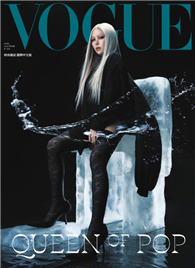As America prepared to enter World War II, a secret military project gave birth to the greatest one-man fighting force ever known: Captain America! Transformed by the Super-Soldier Serum from a 97-pound weakling into the Sentinel of Liberty, Steve Rogers led the charge to liberate the world from the Axis Powers. But before the war’s end, an accident left Cap frozen in suspended animation! When the Avengers resuscitated him decades later, Steve Rogers was greeted by a world vastly changed. He was a man out of time, tormented by the loss of his partner Bucky - but no less committed to the cause of fighting evil in all its forms, including Baron Zemo, M.O.D.O.K., the Super-Adaptoid and his returning archnemesis, the Red Skull! Collecting CAPTAIN AMERICA (1968) #100-113 and material from TALES OF SUSPENSE (1959) #59-99 and NOT BRAND ECHH #3.
| FindBook |
有 1 項符合
Captain America Omnibus Vol. 1 [New Printing 2]的圖書 |
![Captain America Omnibus Vol. 1 [New Printing 2]](https://www.books.com.tw/img/F01/a26/30/F01a263006.jpg) |
Captain America Omnibus Vol. 1 [New Printing 2] 作者:Lee 出版社:Marvel Universe 出版日期:2024-04-30 語言:英文 規格:精裝 / 856頁 / 普通級/ 初版 |
| 圖書館借閱 |
| 國家圖書館 | 全國圖書書目資訊網 | 國立公共資訊圖書館 | 電子書服務平台 | MetaCat 跨館整合查詢 |
| 臺北市立圖書館 | 新北市立圖書館 | 基隆市公共圖書館 | 桃園市立圖書館 | 新竹縣公共圖書館 |
| 苗栗縣立圖書館 | 臺中市立圖書館 | 彰化縣公共圖書館 | 南投縣文化局 | 雲林縣公共圖書館 |
| 嘉義縣圖書館 | 臺南市立圖書館 | 高雄市立圖書館 | 屏東縣公共圖書館 | 宜蘭縣公共圖書館 |
| 花蓮縣文化局 | 臺東縣文化處 |
|
|
圖書介紹 - 資料來源:博客來 評分:
圖書名稱:Captain America Omnibus Vol. 1 [New Printing 2]
內容簡介
作者簡介
Writer/editor Stan Lee (1922-2018) made comic-book history together with Jack Kirby in 1961 with Fantastic Four #1. The monumental popularity of its new style inspired Lee to develop similarly themed characters -- including the Hulk and X-Men with Kirby, Spider-Man and Doctor Strange with Steve Ditko, and Daredevil with Bill Everett. After shepherding his creations through dozens of issues -- in some cases a hundred or more -- Lee allowed other writers to take over, but he maintained steady editorial control. Eventually, he helped expand Marvel into a multimedia empire. In recent years, his frequent cameo appearances in Marvel’s films established Lee as one of the world’s most famous faces.
Born Jacob Kurtzberg in 1917 to Jewish-Austrian parents on New York’s Lower East Side, Jack Kirby came of age at the birth of the American comic book industry. Beginning his career during the rising tide of Nazism, Kirby and fellow artist Joe Simon created the patriotic hero Captain America. Cap’s exploits on the comic book page entertained millions of American readers at home and inspired U.S. troops fighting the enemy abroad. When World War II ended, the public’s interest in super heroes waned; Kirby turned his artistic talents during the 1950s to other genres, such as monsters, Westerns and crime -- as well as the first-of-its-kind Young Romance Comics. In 1961, Kirby returned to super heroes to illustrate what would become the defining issue in Marvel Comics history: Fantastic Four #1. Written by Stan Lee, the team’s debut revolutionized the industry overnight. In contrast to the staid artwork of his predecessors, Kirby’s illustrations seemed to leap off the page with eye-popping action and drama. For the next decade, Kirby and Lee would introduce a mind-boggling array of new characters -- including the Avengers, the Hulk, Thor, Iron Man, the Silver Surfer and the X-Men. Taken together, Kirby’s groundbreaking work with Lee formed the foundation of the Marvel Universe. In the early 1970s, Kirby moved to DC Comics, where his boundless creativity continued. He returned to Marvel in 1975, writing and illustrating Captain America and introducing his final major concept, the Eternals. With the explosion of TV animation during the 1980s, Kirby’s talents turned to the small screen. Comic fans quickly recognized his work on such series as Thundarr the Barbarian and Turbo Teen. Kirby died in 1994, but his influence on the comic book industry is as strong as ever. His work has inspired a generation of professional artists and modern writers who continue to explore his vast universe of concepts and characters. Jim Steranko has earned status as one of the most influential comic book artists of all time. The design sensibility he brought to late-’60s runs on Nick Fury, Agent of S.H.I.E.L.D., Captain America and The X-Men rocked the comic-book world with a revolutionary narrative approach. Leaving regular work in comics in 1970, he pursued his creative zeal in boundless fashion with his illustrations adorning countless science fiction and fantasy novels, film posters, and record album covers. As a historian, his two volumes of The History of Comics remain a definitive resource for scholars, while as an escape artist, his death-defying performances inspired the character Mister Miracle and the protagonist of the Pulitzer Prize-winning The Amazing Adventures of Cavalier & Klay. His film industry magazine Prevue enjoyed an impressive 25-year run. Collaborations with George Lucas, Steven Spielberg, Francis Ford Coppola, Tim Burton and other filmmakers have produced iconic characters and design. Steranko was inducted into the Eisner Hall of Fame in 2006.
|











